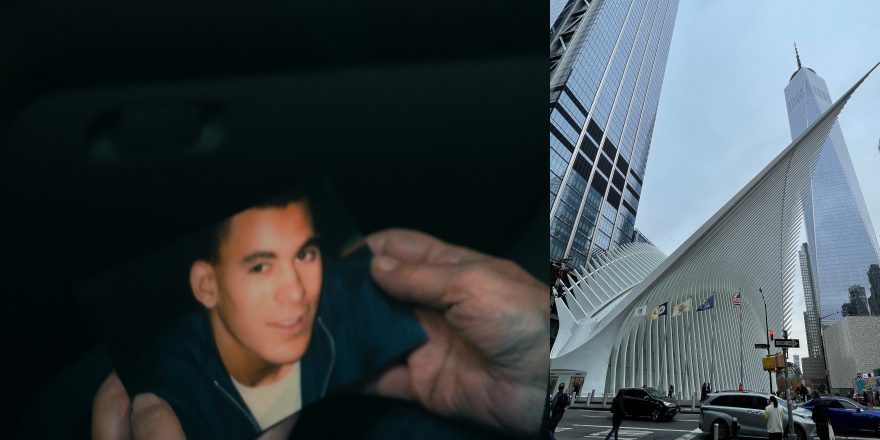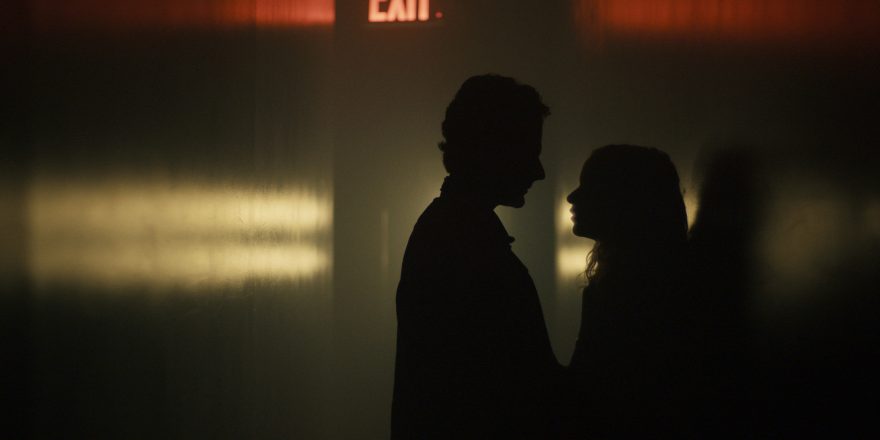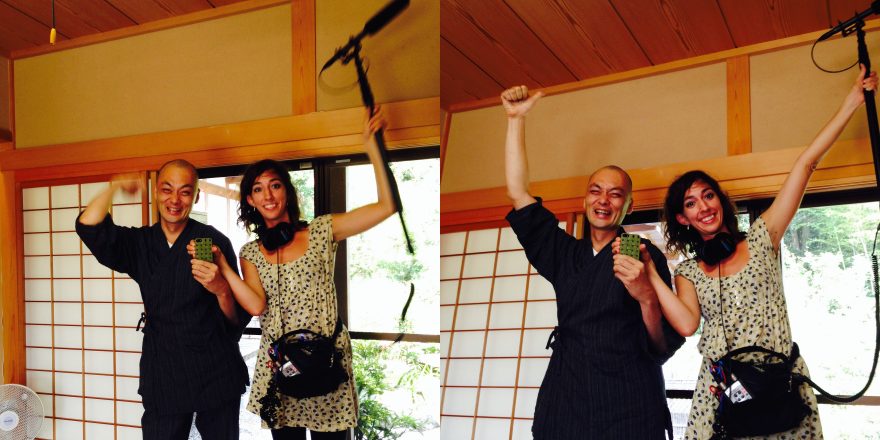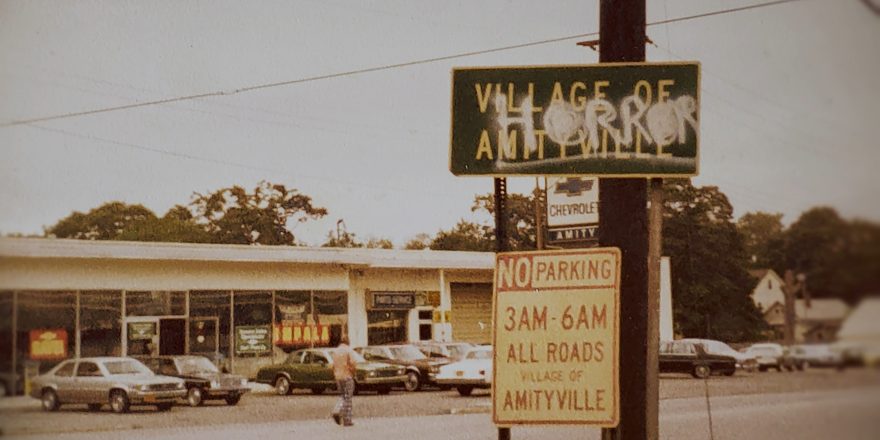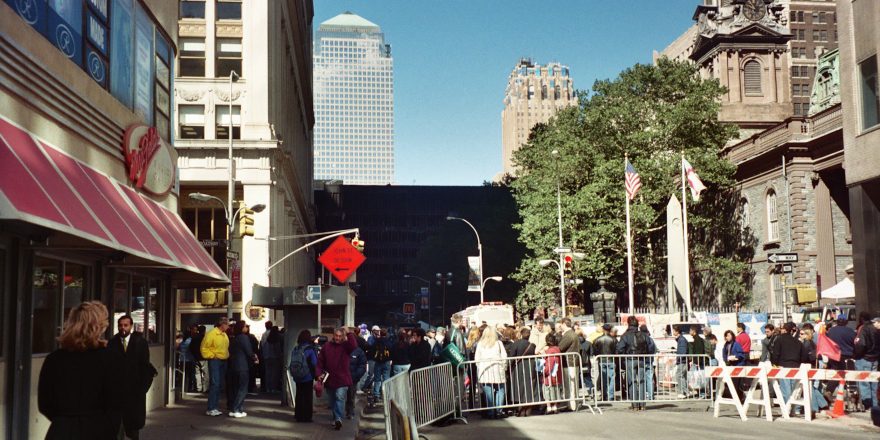In July 2002, a 16-year-old boy named Levi Presley climbed to the top of the Stratosphere, Las Vegas’ tallest casino, and jumped off. To this day, no one knows why. I didn’t know Levi personally. I read about him in a book called About a Mountain, written by essayist John D’Agata. I decided to adapt that book into a film. It’s a common backstory to any film – the article sparks a film. Because of this, there’s more than a degree of separation between the filmmaker and the person they’re doing a film about unless it’s about that filmmaker’s family or close friend. It’s a healthy degree of separation that allows for necessary perspective and for the filmmaker to use their talents to tell the best possible story to make the most impact. It’s a symbiotic relationship. That relationship and offering is why I love working in documentary film.
It is 2022 – 20 years after Levi’s death. I have finished that film, titled This Much We Know, and it is premiering at a film festival in New York City, screening in four hours. I am walking briskly through the rush hour crowds of a New York City subway station. Gail Presley, Levi’s mother, follows behind, trying to match my pace. She has never been to New York City before and I can tell she is a bit unnerved by all the commotion around us. “Controlled chaos!” I yell back to her, “…until it’s not!” I pull her towards our destination – the World Trade Center site and memorial, the one place she has requested to see. We exit through the subway turnstiles and enter into a great white hall called the Oculus – a kind of bird-like architectural homage to the people who lost their lives during 9/11 that is supposed to remind people that no matter what tragedy the city faces, it will always regain hope. The crowds dissipate and we start to slow our pace and give ourselves a moment to take in the massive white hall. Gail looks up and her eyes widen – it is quite a sight. But then Gail’s eyes suddenly dart away and look toward something happening behind me – she shrieks.

I turn to see what she is screaming about and just then a man falls face first and hits the floor with a loud and hollow cracking sound. Blood starts gushing and spreading all over the polished white marble floor. Gail screams and passersby try to dodge the man or stop and stare at the roadblock – aghast and in shock. He jumped, I think to myself. His body shakes, struggling to hold on to life. I run to him and scream for someone to call 911. His body continues to shake and something starts to feel familiar about it – “He’s having a seizure!” Having witnessed six grand mal seizures – two with my husband and four with my children – I immediately know what to do. I turn him on his side, support his head and note the time – the doctors should know about anything more than a five-minute seizure. Time slows and every second becomes bloated. All my senses are attuned to this man. I feel his tailored suit soaked in blood. I smell his cologne, subtle yet distinct. I look at the fine details in his face and guess that, based on his small wrinkles around his eyes and gray hairs coming through, that he’s about 40 years old. His skin is light brown and despite his vacant eyes and his gushing bloody nose, he’s rather handsome.
At minute three, my logic brain tries to catch up and make sense of it all. I jump back and forth between what actually happened and what I thought had happened – Did he jump? Did he have a seizure? Did he jump and then have a seizure? And then I look at Gail, who is trying to catch her breath. I wonder if this is triggering a thought about her son. Levi had light brown skin, too. I think, If Levi had still been alive he would be about this man’s age. Two different kinds of realities run parallel to one another in my mind – the reality that could have been and the reality that is. I hover over the two and feel both simultaneously.
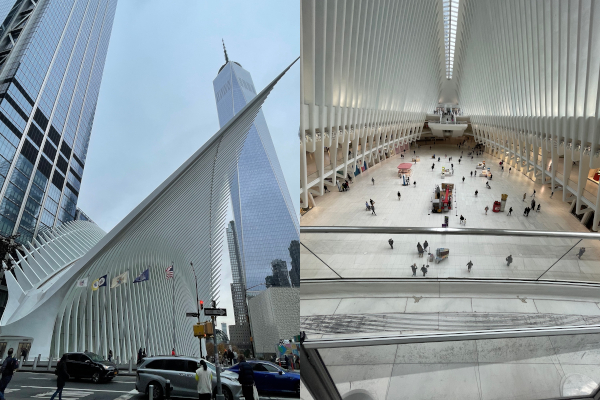
Five minutes. “Where is the ambulance?!” Gail screams. The man’s seizing subsides and he starts to come to, confused. “You’ve had a seizure, you fell on your face, the ambulance is coming, just breathe,” I say. “You’ve had a seizure, you fell on your face, the ambulance is coming, just breathe … just breathe …”
It has been one year to the day since that seizure in the Oculus. I’m on the subway, heading to a theater in downtown Manhattan, where This Much We Know will be screening. I feel grateful to have a theatrical run given how difficult it has become to get films released. It’s my debut feature as a director and I want to make the most of it. Something compels me to get off a few stops before my destination, and I find myself walking into the Oculus again. There are many floors in the Oculus, but my feet retrace my memory back to that location on that day when I held that stranger in my arms, and reminded him to breathe, to live. I eventually find the spot where I think it happened. But something feels off – I thought I had recalled there was a balcony above us, but all I see are low ceilings. He couldn’t have jumped. I then spot five surveillance cameras attached to the low ceiling – lined up in a row three feet apart from one another, aimed at every crevice so as not to miss a thing. For a moment, I wonder if I can access the recording of that moment – surely the cameras picked it up. Something makes me want to confirm that it happened the way I remembered it, but I’m beginning to question if my experience of the situation was accurate.
In my pre-interview with Gail for This Much We Know, I gently ask what she believes happened that day her son went to the top of the tower. She responds with a chain of confusing thoughts – Did he really jump? What if he fell? Perhaps he was pushed? He couldn’t have meant to do it. After all, he showed no previous signs of depression.
I decide to try to find out more details about Levi’s final moments at the top of the tower by interviewing the Las Vegas Coroner, who declared Levi’s death a suicide. I want to know how he arrived at such a definitive answer. “He waved,” he says. “You can see it clearly in the surveillance tape.”
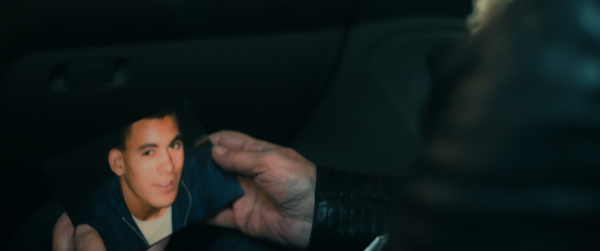
As a documentary filmmaker, I am trying to bear witness to an unfolding event and convey it in a way that feels true to the lived experience, to capture the feeling of being there. But during the 12 years of making this film, I’ve learned there is really no way to do that accurately. I question what accuracy even means. There is a clear difference between the emotional experience and the surveilled experience. The surveilled experience claims to be the truer of the two. If it could talk, it would say that the emotional experience is too nonsensical to be trusted. I wrestle with this insecurity often.
Registering the disbelief on my face, the coroner reasserts what he saw in the surveillance tape: “He turned around and waved.” My friend Sarah took her life three years after Levi did. After her death, life stopped making sense to me. Like Levi, as Gail claims, Sarah also didn’t show any signs of distress. Her suicide made no sense. But I have started to realize that my mind resists the facts that I’d rather not recall. What is the truth, then, if I won’t allow myself to see it? If I had the opportunity, could I look at a surveillance recording of her life and see it differently? More accurately?
While making the film, I asked Gail and her husband if they had the surveillance tape. They said that they would look for it, but it was never found.
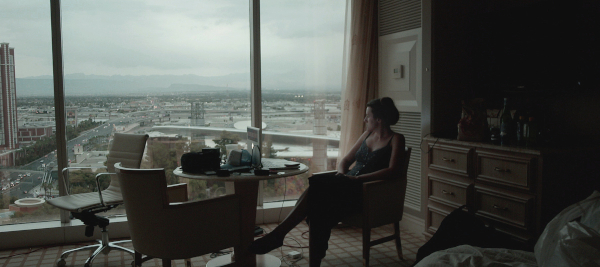
Now the film is picture-locked – final. I call Gail to tell her it will be screening in New York City again. Gail is so happy to hear this. We reminisce about her time visiting the city and seeing the film together, being embraced by all those loving strangers who were so moved by her story. “Oh! And guess what? I found the tape!” she shares, rather excitedly. “The surveillance tape?” I clarify. “Yes … from the top of the tower … I don’t know what to do with it … I don’t think I will ever watch this again … maybe I should throw it away.” But she’s not sure if she can.
I think of her holding that tape in her hands – the tape that holds the moment of her son’s life – his definitive hand wave, his conscious turn, his jump. And then I think of the image that Gail is holding in her mind, what she wants to see – a boy who is standing on the edge, confused and controlled by some kind of invisible force that possesses him and sends him over the edge against his will. He couldn’t have done it consciously… she couldn’t have known she was taking her life away permanently … they just couldn’t have.
The paramedics take over. They pull the handsome stranger onto the gurney and hand me some wet towels to clean up. He is wheeled away. Gail looks at me in shock and awe. “You saved his life!” The crowd dissipates. The rush hour starts to flow in its controlled chaos once again. We have run out of time – the screening is in an hour. We get on the uptown train. Our adrenaline still pumping. The speed of the train makes us feel like we might fly off the rails. It’s too much to handle. Then, a man comes through the doors that connect the train cars. He starts a familiar panhandler speech and I bury my head in my hands, just wanting a little peace and quiet. “Excuse me ladies and gentlemen! This train is not going uptown! It’s going to Motown!” He pushes play on his phone and through a little speaker on his hip, the song “My Girl” plays loudly, drowning out the screeching wheels on the tracks below. I turn to Gail and the tension in her face has been replaced with a huge smile. She starts laughing and singing along. “I don’t believe it! This is the song Levi used to play for me to make me feel happy!”
Moments like these feel like more than coincidences; they feel like messages. “Levi played this for us to make us feel happy, I’m sure of it,” Gail says, her eyes open and bright and certain. “I’m so happy he did,” I say. “I really needed that.” “Me, too,” says Gail. And we hug one another. The thing about grief is that it makes me feel struck with a stark reality and also embraced by mystery. When I think about my friend and her death, my mind goes back and forth between that reality and that mystery. They are parallel universes and they live side by side in my consciousness. Perhaps that day in the Oculus was orchestrated by Levi. Perhaps he was trying to prove a point – that there is the reality and then there is the mystery. Be open to both and your life will start to make sense again.



